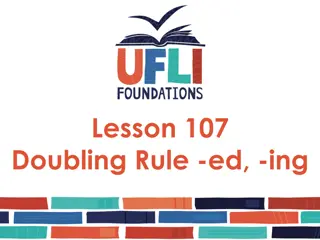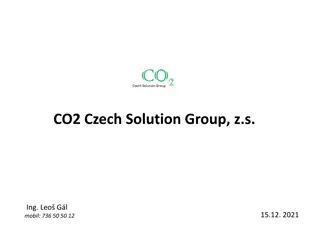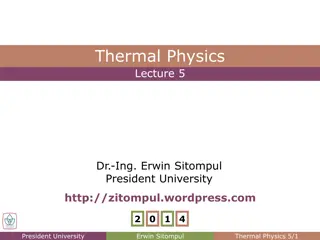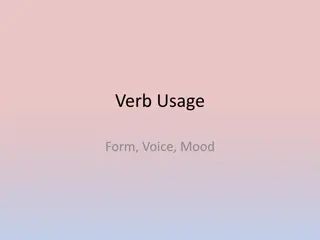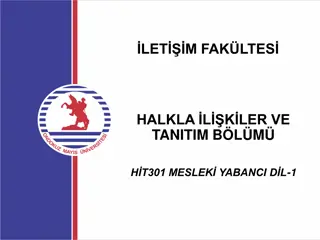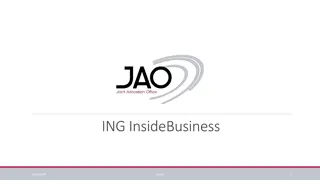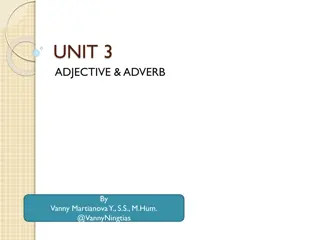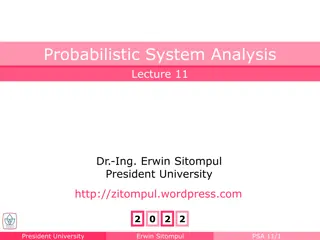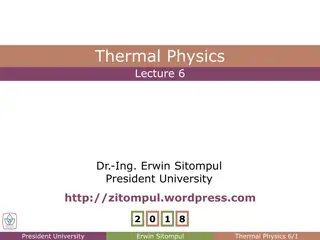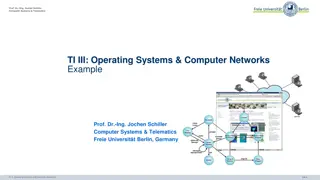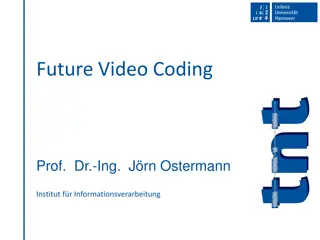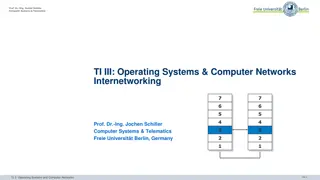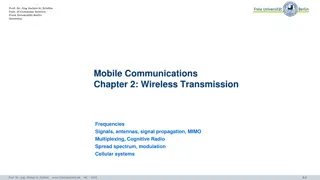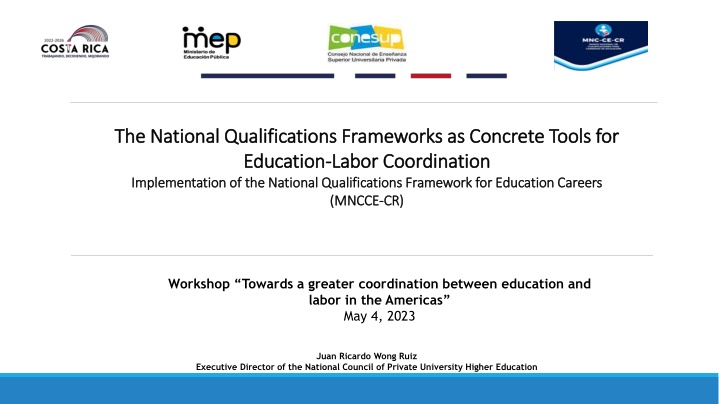
Implementing National Qualifications Frameworks for Education-Labor Coordination
Explore the significance of national qualifications frameworks in promoting coordination between education and labor markets, exemplified by the Central American higher education framework. Learn about expected learning outcomes, categories, and descriptors aimed at enhancing skills and knowledge acquisition. Discover how qualifications frameworks facilitate mobility and mutual recognition in academic and professional spheres, fostering a harmonized educational continuum.
Uploaded on | 0 Views
Download Presentation

Please find below an Image/Link to download the presentation.
The content on the website is provided AS IS for your information and personal use only. It may not be sold, licensed, or shared on other websites without obtaining consent from the author. If you encounter any issues during the download, it is possible that the publisher has removed the file from their server.
You are allowed to download the files provided on this website for personal or commercial use, subject to the condition that they are used lawfully. All files are the property of their respective owners.
The content on the website is provided AS IS for your information and personal use only. It may not be sold, licensed, or shared on other websites without obtaining consent from the author.
E N D
Presentation Transcript
The The National National Qualifications QualificationsFrameworks Education Education- -Labor Implementation Implementationof of the the National National Qualifications Frameworks as Concrete Tools as Concrete Tools for Labor Coordination Coordination Qualifications Framework Framework for (MNCCE (MNCCE- -CR) CR) for for Education Education Careers Careers Workshop Towards a greater coordination between education and labor in the Americas May 4, 2023 Juan Ricardo Wong Ruiz Executive Director of the National Council of Private University Higher Education
A qualifications framework constitutes a reference instrument that describes the learning results that are expected at the end of the different levels of training in the educational continuum, with the purpose of having quality standards, and reference frameworks that harmonize countries education systems, to promote mobility and academic and job recognition. Qualifications framework for Central American higher education, CSUCA, 2018.
Learning Learningoutcomes outcomes Statements about what the student is expected to be able to do, understand or demonstrate once a learning process has finished (Manual of the European Credit Transfer System). They describe in an integrated way the knowledge, skills and attitudes that students will acquire in a training process. These results must be observable or measurable, and are written using a dynamic verb, that is, it refers to an action, not a state (CSUCA, 2018, p. 15)..."
BACKGROUND BACKGROUND 1. Qualifications Framework for Central American Higher Education MCESCA
Qualifications Framework for Central Qualifications Framework for Central American Higher Education American Higher Education The MCESCA presents expected learning outcomes ordered progressively in five levels (Higher Technical University, University Baccalaureate, Bachelor's, Master's and Doctorate.) It groups the expected learning outcomes into five categories or descriptors: Application of knowledge, problem solving and innovation Disciplinary and professional knowledge 1. Disciplinary and professional knowledge 2. Knowledge application, information analysis and problem solving and innovation 3. Autonomy, personal, professional, social responsibility and decision-making 4. Communication 5. Professional, cultural and social interaction Descriptors Communication Autonomy with personal, professional and social responsibility Professional, cultural and social interaction
Itspreparationistheresultof inter-institutionalwork The MNCE-CR is an inter-institutional effort where several institutions participated, and culminated in the signing of an Inter-institutional agreement, where the following participate: 1. The Ministry of Public Education 2. The National Council of Rectors of State Universities 3. The National Council of Private University Higher Education 4. Professional College of Teachers and Graduates
Route Routeof of the theMNCCE MNCCE- -CR CR PHASE 1 PHASE 2 PHASE 3 PHASE 4 Document Review Consulting and validation Dissemination and sustainability Building learning outcomes
Skills Skillsdevelopment development The Ministry of Public Education of Costa Rica has as its guiding principle in its educational model, the development of skills These skills are: 1. Competences for responsible citizenship 2. Skills for life 3.Skills for employability
IMPLEMENTATION OF THE MNCCE IMPLEMENTATION OF THE MNCCE- -CR CR
Workplan forupdatingeducationcareers The National Inter-institutional Committee has scheduled the following implementation activities: 1. Preparation of the update guide aimed at private universities with education careers 2. Socialization and training regarding the update guides 3. Presentation of update requests by universities. 4. Review and authorization of requests 5. Implementation of updated careers. 6. Monitoring and accompaniment of the implementation process.
Technical Technicalconsiderations considerationsin in the theupdating updatingprocess process 1. Referent for decision-making in the educational what to do . 2. It guides the implementation of the document investigation and the diagnosis. 3. To elaborate or modify the study plans, all the elements of the study plan are considered. 4. The matrix of the expected learning results of the MNC-CE-CR must be read in its entirety. 5. The expected learning results are written so that they are interpreted at the highest levels of knowledge of a university level, the objectives or competencies will be established by each University. 6. The expected learning results must be evidenced both in the professional academic profile and in other curricular elements, depending on the type or model of curricular design that is chosen. 7. In the structure and curriculum, a clear relationship must be identified between the expected learning results of the MNC-CE-CR and the courses, subjects or modules that comprise them.
Recommendations for incorporating learning outcomes The incorporation of learning results must be linked to the processes of designing and modifying the study plan of a university degree 2.Verification of coherence and relevance of the curricular elements 1. Diagnosis or curricular analysis
Verify that the curriculum meets the learning outcomes Verify that the curriculum meets the learning outcomes Justifies modification of the study plan of the career and bases the design or JUSTIFICATION AND RATIONALE Reference will be made to the inclusion of the expected learning outcomes of the MNC-CE-CR in the professional academic profile PROFESSIONAL ACADEMIC PROFILE Purposes of career training based on the professional academic profile OBJECTIVES (GENERAL AND SPECIFIC) Including the descriptors and learning outcomes in the features of the professional academic profile entails also including them as part of the structure, curriculum, components. MESH AND CURRICULAR STRUCTURE and other curricular
STEPS TO MAKE THE INCLUSION OF LEARNING OUTCOMES A- Design of new careers: 1. Carrying out the diagnosis. 2. Identification of the capacities, knowledge, abilities, attitudes, values or competences necessary in the formation of the educator. 3. Drafting of the graduate's own professional academic profile features (they are not transcribed from the MNC-CE-CR). 4. Comparative analysis of the features of the profile proposed in the study plan with the descriptors and expected learning results of the MNC-CE-CR. 5. When identifying the expected learning results of the MNC-CE-CR, aspects that have not been considered are included, integrated or new features are elaborated if necessary.
B- Modification of careers approved at the University: 1. Carrying out a curricular analysis to identify the needs to update the career. 2. Comparative analysis of the features of the profile indicated in the current study plan, identify those expected learning results or aspects of the descriptors of the MNC-CE-CR that need to be included in the features of the new profile. 3. Updating of the professional academic profile of the graduate.
Lessons learned and challenges 1. Consider the MNC-CE-CR as an opportunity to improve quality training for education professionals. 2. Promotion of coordinated inter-institutional work to improve the academic training of education professionals. 3. Establishment of actions that include a permanent dialogue between the parties involved in teacher training processes and with the education sector for the implementation of the MNC-CE-CR. 4. Strengthening of inter-institutional work to update and improve teacher professional development. 5. Active participation of the university teaching staff, people in charge of managing the study plans in the design and modification processes for decision-making; as well as, the appropriation of the educational intentions that will be reflected in the university careers.
6. Integration of the human rights approach in the training of professionals and in the updating of university professors, in order to incorporate it as conceptual, attitudinal and procedural knowledge throughout the entire curriculum. 7. Assignment implementation of the MNC-CE-CR in the Universities. of the human, technical and budgetary resources necessary for the 8. Ensure the incorporation of actions that strengthen the integral health (mental, emotional and physical) of education professionals. 9. Continue with the development of the MNC in other university disciplines


